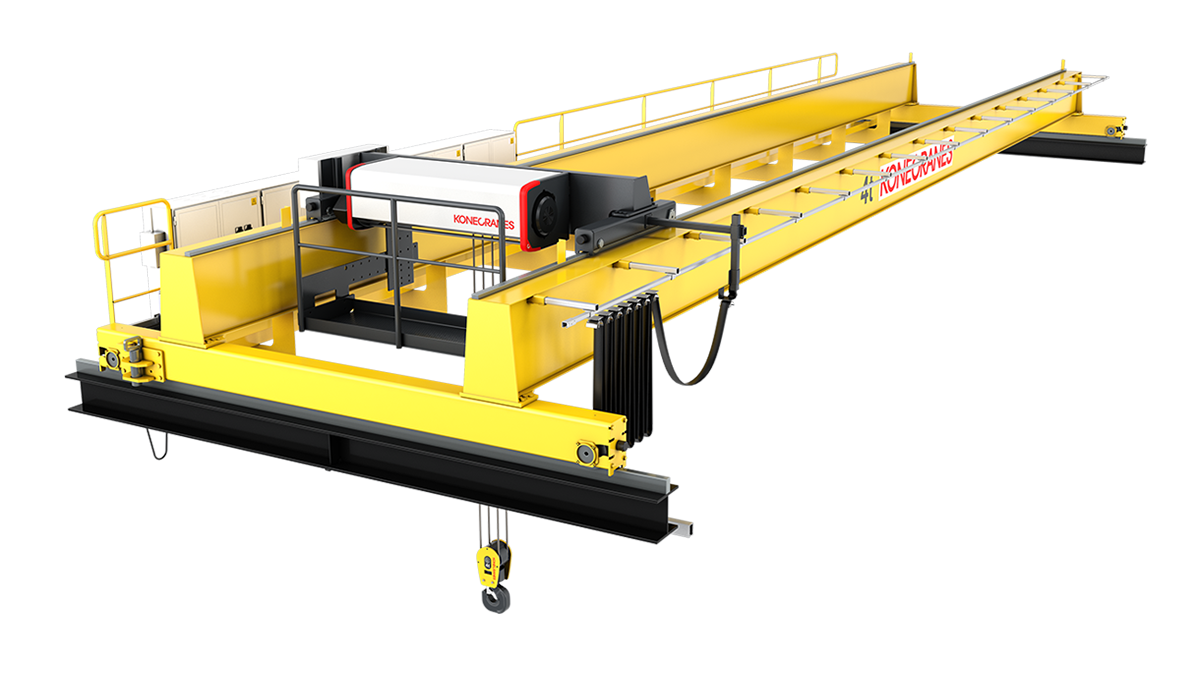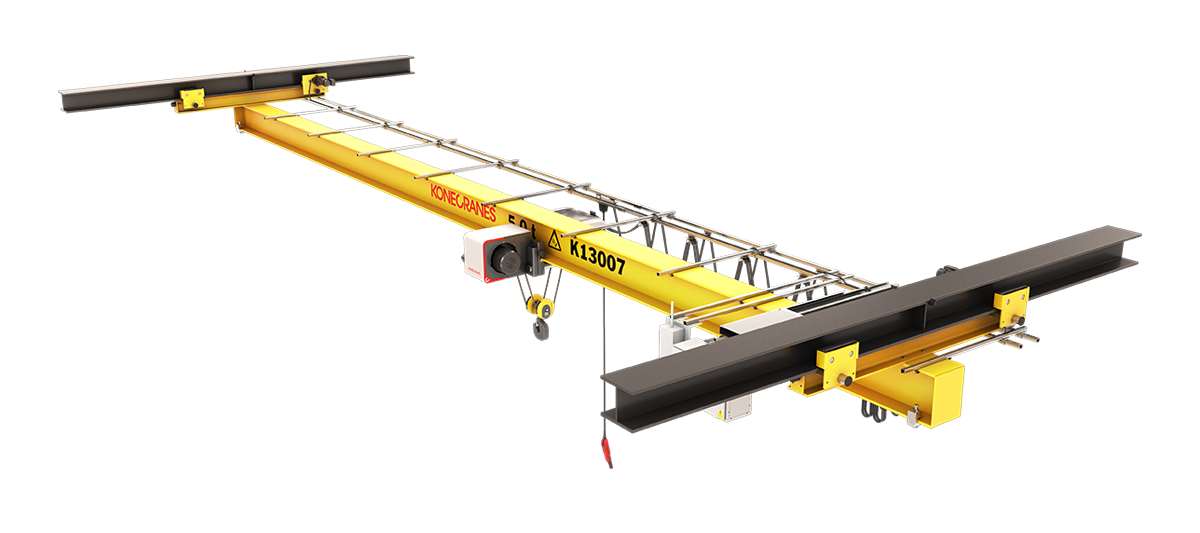Article
Which option is best for you: a top-running crane or underhung crane?
Michael Hancock, Technical Trainer
If you have a pre-existing runway, you probably already have the answer. However, factors such as the design and layout of your facility, its ceiling height, and the requirements of your lifting application—such as your required height of lift and load capacity—will also help determine which crane option is your best bet.
Top-running cranes
 For buildings with limited headroom, top-running cranes provide greater lifting height than an underhung crane. That’s because a top-running crane rides on rails on top of the beam. If head room and lifting height are the biggest factors in your decision, a double girder, top-running crane provides the greatest headroom optimization.
For buildings with limited headroom, top-running cranes provide greater lifting height than an underhung crane. That’s because a top-running crane rides on rails on top of the beam. If head room and lifting height are the biggest factors in your decision, a double girder, top-running crane provides the greatest headroom optimization.
Compared to underhung cranes, top-running cranes are typically larger and a better choice for higher capacity lifting applications, such as those involving 20 tons or more. Other advantages of top-running overhead crane systems include easier installation and wide availability of parts. Additionally, the wheels of a top-running crane are easier to service, as the crane does not have to be suspended from above.
Underhung cranes
 In contrast to a top-running crane, an underhung, or under-running, crane rides on the lower flange of the beam. Its primary advantage over a top-running crane is that it typically experiences fewer tracking problems than a top-running crane. That’s because an underhung crane is bolted to the I-beam, which is secured to the building structure. This limits the crane’s movement and lessens the chances of rail misalignment.
In contrast to a top-running crane, an underhung, or under-running, crane rides on the lower flange of the beam. Its primary advantage over a top-running crane is that it typically experiences fewer tracking problems than a top-running crane. That’s because an underhung crane is bolted to the I-beam, which is secured to the building structure. This limits the crane’s movement and lessens the chances of rail misalignment.
But when an underhung system does require realignment, the required downtime may be greater than for a top-running system, due to suspension and rigging required for alignment of an underhung system. In contrast, while top-running systems require more frequent rail alignment checks and more frequent rail alignment, they are easier to service.
Another issue to consider: Is your building’s structure strong enough to support a crane system? If not, a freestanding overhead crane system is an option. The drawback of a freestanding system is that it takes up floor space from production and other uses. If the building is not strong enough to support a 10-ton top-running crane, you may also consider two 5-ton underhung cranes instead.
Learn more about our industrial crane offering
Learn more

 For buildings with limited headroom, top-running cranes provide greater lifting height than an underhung crane. That’s because a top-running crane rides on rails on top of the beam. If head room and lifting height are the biggest factors in your decision, a double girder, top-running crane provides the greatest headroom optimization.
For buildings with limited headroom, top-running cranes provide greater lifting height than an underhung crane. That’s because a top-running crane rides on rails on top of the beam. If head room and lifting height are the biggest factors in your decision, a double girder, top-running crane provides the greatest headroom optimization. In contrast to a top-running crane, an underhung, or under-running, crane rides on the lower flange of the beam. Its primary advantage over a top-running crane is that it typically experiences fewer tracking problems than a top-running crane. That’s because an underhung crane is bolted to the I-beam, which is secured to the building structure. This limits the crane’s movement and lessens the chances of rail misalignment.
In contrast to a top-running crane, an underhung, or under-running, crane rides on the lower flange of the beam. Its primary advantage over a top-running crane is that it typically experiences fewer tracking problems than a top-running crane. That’s because an underhung crane is bolted to the I-beam, which is secured to the building structure. This limits the crane’s movement and lessens the chances of rail misalignment.